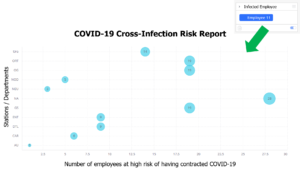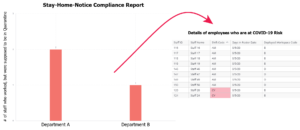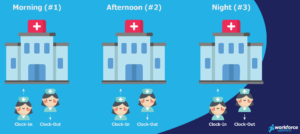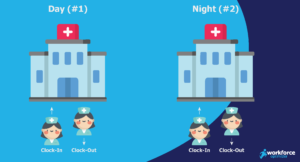
Fighting COVID-19 with AI-Enabled Workforce Analytics
The COVID-19 pandemic has swept all of us off of our feet. With the exception of a few Chinese researchers, nobody saw this global pandemic coming and could have imagined how our everyday lives would be impacted in a major way – both personally and professionally.
Workforce Optimizer works with labor-intensive organisations with large workforces which are at a great risk of having their business significantly impacted by potential COVID-19 outbreaks. Examples of those organizations include hospitals, retail chains and public transportation companies.
In today’s article, we will go over some of the features these clients have used in order to effectively combat the virus and accelerate the journey back to the previous “normal”.
Workforce Tracking + Analytics
Organizations with large workforces and complex scheduling across multiple industries track the whereabouts and work hours using Workforce Optimizer’s Time & Attendance management solution. The solution allows clients to track their staff by having them clock in and out using either a mobile app on a smartphone or through the use of other time clock devices, such as fingerprint scanners, RFID tags or other sorts of biometric devices.
Workforce Analytics showing you which employee worked in which location at what point in time is usually used to keep track of the working hours of your employees and to automatically compute their claims (e.g. Overtime). Knowing which teams and employees worked in which department can also be used to quickly pinpoint which employees might be at a greater risk of having contracted COVID-19 and thus support contact tracing efforts.
 The above screenshot is from a report that visualizes how many potential infections there might be in each department of the organization. At first, we select one employee who has contracted COVID-19 and subsequently the system will pull all the staff records who have worked the same shift or in the same location as the infected employee. A data export can then be run to see which employees need to be contacted, informed and potentially isolated or quarantined.
The above screenshot is from a report that visualizes how many potential infections there might be in each department of the organization. At first, we select one employee who has contracted COVID-19 and subsequently the system will pull all the staff records who have worked the same shift or in the same location as the infected employee. A data export can then be run to see which employees need to be contacted, informed and potentially isolated or quarantined.

In a similar manner, workforce tracking was also used to monitor if employees are adhering to their Stay-Home-Notices (SHNs). If an employee was issued such a notice and still reported to work, an alert was automatically triggered to ensure that their supervisors were informed about this SHN breach.
Dynamic Rescheduling
One of the hospitals relying on Workforce Optimizer’s AI-Scheduling module to create their shift rosters was facing an obstacle related to their shift scheduling after the crisis struck. Their goal was to quickly move from three 8-hour shifts per day to two 12-hour shifts per day. The rationale behind this decision was to reduce the number of times where medical frontliners were either entering or leaving the premises on a daily basis.

The above illustration shows how three shifts per day (Morning, Afternoon and Night) lead to three clock-ins and three clock-outs, for a total of six instances where somebody either enters or exits the premises (i.e. the hospital).

Moving from those three shifts to just two shifts per day (Day and Night) would reduce this to just four instances where employees enter or exit the premises. With less employees entering and leaving, the risk of cross-infection can be significantly reduced. The challenge, however, is to quickly make the shift without interrupting operations and reducing the level of care that patients receive. With the configurable AI-Scheduler, the hospital was able to change their shift rosters to the new scheduling approach in less than an hour, allowing them to focus on more strategic initiatives instead of being bogged down with the administrative burden of rescheduling thousands of medical staff.
AUTHOR
 Florian Parzhuber is a Workforce Management & AI Specialist at Workforce Optimizer, a leading AI-Enabled workforce management solution. Having lived and worked in China, South Korea as well as Europe, he accumulated extensive knowledge on the challenges large enterprises face across the globe. Florian married his interests in technology and social impact at Workforce Optimizer where he hopes to capitalise on the power of machine learning and resource optimization to drive positive social change. He can be reached at florian@workforceoptimizer.com.
Florian Parzhuber is a Workforce Management & AI Specialist at Workforce Optimizer, a leading AI-Enabled workforce management solution. Having lived and worked in China, South Korea as well as Europe, he accumulated extensive knowledge on the challenges large enterprises face across the globe. Florian married his interests in technology and social impact at Workforce Optimizer where he hopes to capitalise on the power of machine learning and resource optimization to drive positive social change. He can be reached at florian@workforceoptimizer.com.





